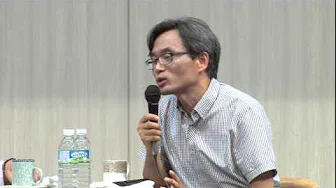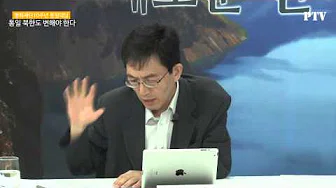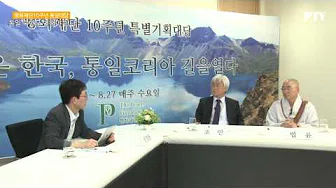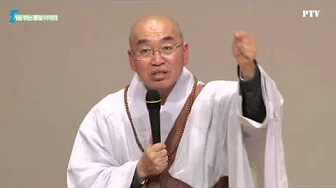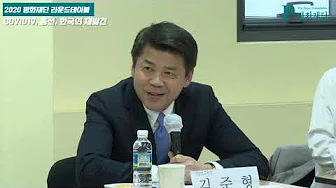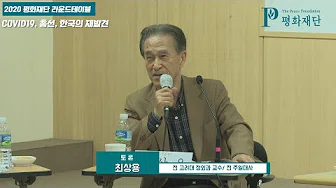Ram Dass
Ram Dass | |
|---|---|
 Ram Dass in February 2008 | |
| Born | Richard Alpert April 6, 1931 Boston, Massachusetts, U.S. |
| Died | December 22, 2019 (aged 88) |
| Occupation | Spiritual teacher in the lineage of Neem Karoli Baba, author |
| Children | 1 |
Ram Dass (born Richard Alpert; April 6, 1931 – December 22, 2019),[1] also known as Baba Ram Dass, was an American spiritual teacher, psychologist, and author. His best known book, Be Here Now (1971), has been described as "seminal", and helped popularize Eastern spirituality and yoga with the baby boomer generation in the West.[2][3] He authored or co-authored twelve more books on spirituality over the next four decades, including Grist for the Mill (1977), How Can I Help? (1985), and Polishing the Mirror (2013).
Dass was personally and professionally associated with Timothy Leary at Harvard University in the early 1960s. Then known as Richard Alpert, he conducted research with Leary on the therapeutic effects of psychedelic drugs. In addition, Alpert assisted Harvard Divinity School graduate student Walter Pahnke in his 1962 "Good Friday Experiment" with theology students, the first controlled, double-blind study of drugs and the mystical experience.[4][5] While not illegal at the time, their research was controversial and led to Leary and Alpert's dismissal from Harvard in 1963.
In 1967, Alpert traveled to India and became a disciple of Hindu guru Neem Karoli Baba who gave him the name Ram Dass, meaning "Servant of God". In the coming years, he founded the charitable organizations Seva Foundation and Hanuman Foundation. He traveled extensively giving talks and retreats and holding fundraisers for charitable causes in the 1970s, 80s, and 90s. In 1997, he had a stroke which left him with paralysis and expressive aphasia. He eventually grew to interpret this event as an act of grace, learning to speak again and continuing to teach and author books. After becoming seriously ill during a trip to India in 2004, he gave up traveling and moved to Maui, Hawaii, where he hosted annual retreats with other spiritual teachers until his death.
Youth and education[edit]
Alpert was born to a Jewish family in Newton, Massachusetts, the son of Gertrude (Levin) and George Alpert, a lawyer in Boston.[6] Alpert had a bar mitzvah but was "disappointed by its essential hollowness".[7] He considered himself an atheist[8] during his early life, describing himself as "inured to religion. I didn't have one whiff of God until I took psychedelics."[4]
Alpert attended the Williston Northampton School, graduating in 1948 as a part of the Cum Laude Association.[9] He achieved a Bachelor of Arts degree from Tufts University in 1952, a master's degree from Wesleyan University in 1954, and a doctorate (all in psychology) from Stanford University in 1957.[10][4] His father had wanted him to go to medical school, but while at Tufts he decided to study psychology instead.[4] Alpert's mentor at Wesleyan, David McClelland, recommended Alpert to Stanford, where he received his PhD.[4] Alpert wrote his doctoral thesis on "achievement anxiety",[4] taught at Stanford for one year and began psychoanalysis.[4]
Harvard professorship and research[edit]
McClelland moved to Cambridge, Massachusetts, to teach at Harvard University, and helped Alpert accept a tenure-track position there in 1958 as an assistant clinical psychology professor.[4][11][12] Alpert worked with the Social Relations Department, the Psychology Department, the Graduate School of Education, and the Health Service, where he was a therapist. He specialized in human motivation and personality development, and published his first book Identification and Child Rearing.[12]
McClelland did work with his close friend and associate Timothy Leary, a lecturer in clinical psychology at the university.[4] Alpert and Leary had met through McClelland, who headed the Center for Research in Personality where Alpert and Leary both did research.[11] Alpert was McClelland's deputy in the lab.[4] After returning from a visiting professorship at the University of California, Berkeley, in 1961, Alpert devoted himself to joining Leary in experimentation with and intensive research to the potentially therapeutic effects of hallucinogenic drugs such as psilocybin, LSD-25, and other psychedelic chemicals, through their Harvard Psilocybin Project.[4][12][5] In addition, Alpert assisted Harvard Divinity School graduate student Walter Pahnke in his 1962 "Good Friday Experiment" with theology students, the first controlled, double-blind study of drugs and the mystical experience.[4][5]
Alpert and Leary co-founded the non-profit International Federation for Internal Freedom (IFIF) in 1962 in Cambridge, Massachusetts, in order to carry out studies in the religious use of psychedelic drugs, and were both on the board of directors.[13][14] Leary and Alpert were formally dismissed from Harvard in 1963.[5] According to Harvard President Nathan M. Pusey, Leary was dismissed for leaving Cambridge and his classes without permission or notice, and Alpert for allegedly giving psilocybin to an undergraduate.[5][15]
Millbrook and psychedelic counterculture (1963–1967)[edit]
In 1963 Alpert, Leary, and their followers moved to the Hitchcock Estate in Millbrook, New York, after IFIF's New York City branch director and Mellon fortune heiress Peggy Hitchcock arranged for her brother Billy to rent the estate to IFIF.[4][16] Alpert and Leary immediately set up a communal group with former Harvard Psilocybin Project members at the estate (commonly known as "Millbrook"), and the IFIF was subsequently disbanded and renamed the Castalia Foundation (after the intellectual colony in Hermann Hesse's novel The Glass Bead Game).[17][18][19] The core group at Millbrook, whose journal was the Psychedelic Review, sought to cultivate the divinity within each person.[18] At Millbrook, they experimented with psychedelics and often participated in group LSD sessions, looking for a permanent route to higher consciousness.[4][18] The Castalia Foundation hosted weekend retreats on the estate where people paid to undergo the psychedelic experience without drugs, through meditation, yoga, and group therapy sessions.[19]
Alpert and Leary continued on to co-author a book entitled The Psychedelic Experience with Ralph Metzner, based on the Tibetan Book of the Dead, and it was published in 1964.[20] Alpert co-authored LSD with Sidney Cohen and Lawrence Schiller in 1966.[12][21]
In 1967 Alpert gave talks at the League for Spiritual Discovery's center in Greenwich Village.[22]
Spiritual search and name change[edit]
In 1967, Alpert traveled to India where he met American spiritual seeker Bhagavan Das, and later met Neem Karoli Baba who became his guru at Kainchi ashram, whom Alpert called "Maharaj-ji".[4][12][23] It was Maharaj-ji who gave Alpert the name "Ram Dass", which means "servant of God",[24][25] referring to the incarnation of God as Ram or Lord Rama. Alpert also corresponded with Indian spiritual teacher Meher Baba and mentioned Baba in several of his books.[26]
Be Here Now[edit]
After Alpert returned to America as Ram Dass, he stayed at the Lama Foundation in Taos, New Mexico, as a guest. Ram Dass had helped Steve Durkee (Nooruddeen Durkee) and Barbara Durkee (Asha Greer or Asha von Briesen) co-found the countercultural, spiritual community in 1967, and it had an ashram dedicated to Ram Dass's guru. During Ram Dass's visit, he presented a manuscript he had written, entitled From Bindu to Ojas. The community's residents edited, illustrated, and laid out the text, which ultimately became a best-selling book when published under the name Be Here Now in 1971.[3][25][27][28][29][30] The 416-page manual for conscious being was published by the Lama Foundation, as Ram Dass's benefit for the community.[3] Be Here Now contained Ram Dass's account of his spiritual journey, as well as recommended spiritual techniques and quotes.[12] The proceeds from the book helped sustain the Lama Foundation for several years, after which they donated the book's copyright and half its proceeds to the Hanuman Foundation in Taos.[3]
Foundations and Living/Dying Project[edit]
During the 1970s, Ram Dass was focused on teaching, writing, and working with foundations.[4] He founded the Hanuman Foundation, a nonprofit educational and service organization that initiated the Prison-Ashram Project (now known as the Human Kindness Foundation), in 1974.[12][30] The Hanuman Foundation is focused on the spiritual well-being of society through education, media and community service programs. He co-founded the Seva Foundation by joining with health-care workers to treat the blind in India, Nepal, and developing countries.[4][12][30] Co-founded in 1978 with public health leader Larry Brilliant and humanitarian activist Wavy Gravy, it has become an international health organization.
In the early 1970s, Ram Dass taught workshops on conscious aging and dying around the United States.[30] Elisabeth Kübler-Ross was one of his students.[31] Ram Dass helped create the Dying Project with its Executive Director Dale Borglum, whom he had met in India.[31] At the time, Borglum was also Executive Director of the Hanuman Foundation.[31] The Living/Dying Project, based in Marin, California, starting in 1986, was initially named the Dying Center and located in Santa Fe, New Mexico.[12][31] The Dying Center was the first residential facility in the U.S. where people came to die "consciously".[31]
The Love Serve Remember Foundation was organized to preserve and continue the teachings of Neem Karoli Baba and Ram Dass. Ram Dass also served on the faculty of the Metta Institute where he provided training on mindful and compassionate care of the dying.
Over the course of his life since the inception of his Hanuman Foundation, Ram Dass gave all of his book royalties and profits from teaching to his foundation and other charitable causes. The estimated amount of earnings he gave away annually ranges from $100,000 to $800,000.[32]
Later life[edit]
At 60 years of age, Ram Dass began exploring Judaism seriously for the first time. "My belief is that I wasn't born into Judaism by accident, and so I needed to find ways to honor that", he says. "From a Hindu perspective, you are born as what you need to deal with, and if you just try and push it away, whatever it is, it's got you."[33]
Leary and Ram Dass, who had grown apart after Ram Dass denounced Leary in a 1974 news conference, reconciled in 1983 at Harvard (at a reunion for the 20th anniversary of their controversial firing from the Harvard faculty), and reunited before Leary's death in May 1996.[34][35][36][37]
In February 1997, Ram Dass had a stroke that left him with expressive aphasia, which he interpreted as an act of grace.[31] He stated, "The stroke was giving me lessons, and I realized that was grace—fierce grace ... Death is the biggest change we’ll face, so we need to practice change."[4] He lived on Maui and did not leave the Hawaiian Islands from 2004 until his death in 2019, after he almost died from an infection during a trip to India.[4][30][31] He continued to make public appearances and to give talks at small venues; held retreats in Maui; and continued to teach through live webcasts.[31][38][39] When asked if he could sum up his life's message, he replied, "I help people as a way to work on myself, and I work on myself to help people ... to me, that's what the emerging game is all about."[40] Ram Dass was awarded the Peace Abbey Courage of Conscience Award in August 1991.[41]
In 2003, Wayne Dyer published a plea for donations for Ram Dass's support due to his declining health following the stroke,
In 2013, Ram Dass released a memoir and summary of his teaching, Polishing the Mirror: How to Live from Your Spiritual Heart. In an interview about the book, at age 82, he said that his earlier reflections about facing old age and death now seem naive to him. He said, in part: "Now, I’m in my 80s ... Now, I am aging. I am approaching death. I’m getting closer to the end. ... Now, I really am ready to face the music all around me."[43]
He died on December 22, 2019, at the age of 88.[44]
Personal life[edit]
In the 1990s, Ram Dass discussed his bisexuality.[45][46][47] He stated, "I've started to talk more about being bisexual, being involved with men as well as women," and added his opinion that being gay "isn't gay, and it's not not-gay, and it's not anything—it's just awareness."[47]
At 78, Ram Dass learned that he had fathered a son as a 24-year-old at Stanford during a brief relationship with history major Karen Saum, and that he was now a grandfather. The fact came to light when his son, Peter Reichard, a 53-year-old banker in North Carolina, took a DNA test after learning about his mother's doubt concerning his parentage.[48][49][50]
Ram Dass was a pescetarian.[51]
Works[edit]
Books[edit]
- Identification and Child Rearing (with R. Sears and L. Rau) (1962) Stanford University Press
- The Psychedelic Experience: A Manual Based on the Tibetan Book of the Dead (with Timothy Leary and Ralph Metzner) (1964) ISBN 0-8065-1652-6
- LSD (with Sidney Cohen) (1966) ISBN 0-453-00120-3
- Be Here Now or Remember, Be Here Now (1971) ISBN 0-517-54305-2
- Doing Your Own Being (1973)
- The Only Dance There Is (1974) ISBN 0-385-08413-7
- Grist for the Mill (with Stephen Levine) (1977) ISBN 0-89087-499-9
- Journey of Awakening: A Meditator's Guidebook (1978) ISBN 0-553-28572-6
- Miracle of Love: Stories about Neem Karoli Baba (1978) ISBN 0-525-47611-3
- How Can I Help? Stories and Reflections on Service (with Paul Gorman) (1985) ISBN 0-394-72947-1
- Compassion in Action: Setting Out on the Path of Service (with Mirabai Bush) (1991) ISBN 0-517-57635-X
- Still Here: Embracing Aging, Changing and Dying (2000) ISBN 1-57322-871-0
- Paths to God: Living The Bhagavad Gita (2004) ISBN 1-4000-5403-6
- Be Love Now (with Rameshwar Das) (2010) ISBN 1-84604-291-7
- Polishing the Mirror: How to Live from Your Spiritual Heart (with Rameshwar Das) (2013) ISBN 1-60407-967-3
- Walking Each Other Home: Conversations on Loving and Dying (with Mirabai Bush) (2018) ISBN 1-68364-200-7
Recordings[edit]
- The Psychedelic Experience: A Manual Based on the Tibetan Book of the Dead (with Timothy Leary & Ralph Metzner) (1966) (reissued on CD in 2003 by Folkways)
- Here We All Are, a 3-LP set recorded live in Vancouver, BC in the summer of 1969.
- Love Serve Remember (1973), a six-album set of teachings, data, and spiritual songs (ZBS Foundation) (released in MP3 format, 2008)
- Cosmix (2008), a video enhanced CD of Ram Dass messages mixed with work by Australian DJ and performer Kriece, released on Waveform Records.[52]
- RAM DASS (2019) collaborative album with musician East Forest featuring the final recorded teachings of Ram Dass. [53]
Films[edit]
- A Change of Heart, a 1994 one-hour documentary directed by Eric Taylor and hosted by Ram Dass and shown on many PBS stations. It examined taking social action as a meditative act.
- Ecstatic States, a 1996 interview on VHS, by Wiseone Edutainment Pty.
- Ram Dass, Fierce Grace, a 2001 biographical documentary directed by Micky Lemle.[54]
- Ram Dass – Love Serve Remember, a 2010 short film directed by V. Owen Bush, included in the Be Here Now Enhanced Edition eBook.
- Dying to Know: Ram Dass & Timothy Leary, a 2014 documentary dual portrait.[55]
- Ram Dass, Going Home, a 2017 documentary portrait of Ram Dass in his later years, directed by Derek Peck.[56]
- Ram Dass, Becoming Nobody, a 2019 documentary portrait of Richard Alpert becoming Ram Dass and Ram Dass becoming nobody. The slogan of the film is: You have to be somebody to become nobody. Directed by Jamie Catto.[57]
References[edit]
- ^ Oliver, Joan Duncan (December 23, 2019). "Ram Dass, Beloved Spiritual Teacher, Has Died". Tricycle: The Buddhist Review.
- ^ Harvey, Andrew; Erickson, Karuna (2010). Heart Yoga: The Sacred Marriage of Yoga and Mysticism. North Atlantic Books. ISBN 978-1-58394-291-8.
- ^ a b c d Tempo staff (July 19, 2010). "'Be Here Now' turns 40". The Taos News. Archived from the original on July 16, 2012. Retrieved August 5, 2011.
- ^ a b c d e f g h i j k l m n o p q r s Davidson, Sara (Fall 2006). "The Ultimate Trip". Tufts Magazine. Archived from the original on March 4, 2016. Retrieved November 23, 2011.
- ^ a b c d e Hiatt, Nathaniel J. (May 23, 2016). "A Trip Down Memory Lane: LSD at Harvard". The Harvard Crimson. Retrieved September 24, 2017.
- ^ https://www.nytimes.com/2019/12/23/obituaries/baba-ram-dass-richard-alpert-dead.html
- ^ Starr, Bernard (July 19, 2007). "Rite of passage: Turn-on or turn-off?". Religion and Spirituality.com. Archived from the originalon April 26, 2012. Retrieved November 23, 2011.
- ^ "Baba Ram Dass". Ramparts. 11: 38.
He was, at this time, an atheist, and had difficulty even pronouncing 'spiritual'.
- ^ Private school equivalent of the National Honor Society
- ^ Obituary Washington Post, December 23, 2019
- ^ a b "Leary Lectures at Harvard for First Time in 20 Years". The New York Times. April 25, 1983. Retrieved February 16, 2018.
- ^ a b c d e f g h i Mattei, Matt. "Mindful Man of the Month: Ram Dass". Meet Mindful. Retrieved February 16, 2018.
- ^ "International Federation For Internal Freedom – Statement of Purpose". timothylearyarchives.org. March 21, 2009. Retrieved September 24, 2017.
- ^ Lee, Martin A.; Shlain, Bruce (1992). Acid Dreams: The Complete Social History of LSD : The CIA, the Sixties, and Beyond. Grove Press. p. 96. ISBN 978-0802130624.
- ^ Russin, Joseph M.; Weil, Andrew T. (May 28, 1963). "The Crimson takes Leary, Alpert to Task: 'Roles' & 'Games' In William James". The Harvard Crimson. Retrieved August 8, 2011.
- ^ Lee, Martin A.; Shlain, Bruce (1992). Acid Dreams: The Complete Social History of LSD : The CIA, the Sixties, and Beyond. Grove Press. p. 97. ISBN 978-0802130624.
- ^ Chevallier, Jim (March 3, 2003). "Tim Leary and Ovum – A Visit to Castalia with Ovum". Chez Jim/Ovum.
- ^ a b c Lee, Martin A.; Shlain, Bruce (1992). Acid Dreams: The Complete Social History of LSD : The CIA, the Sixties, and Beyond. Grove Press. p. 98. ISBN 978-0802130624.
- ^ a b Lander, Devin (January 30, 2012). "League for Spiritual Discovery". World Religions and Spiritualities Project.
- ^ Leary, Timothy; Alpert, Richard; Metzner, Ralph (2008). The Psychedelic Experience: A Manual Based on the Tibetan Book of the Dead. Penguin Classics. ISBN 978-0141189635.
- ^ Alpert, Richard; Cohen, Sidney (1966). LSD. New American Library. ISBN 0453001351.
- ^ Graboi, Nina (May 1991). One Foot in the Future: A Woman's Spiritual Journey. Aerial Press. pp. 222–224. ISBN 978-0942344103.
- ^ Graboi, Nina (May 1991). One Foot in the Future: A Woman's Spiritual Journey. Aerial Press. pp. 267–270. ISBN 978-0942344103.
- ^ "Biography: Richard Alpert/Ram Dass". Ramdass.org. Ram Dass / Love Remember Serve Foundation. Retrieved July 1, 2013.
- ^ a b Almereyda, Michael (February 24, 2002). "Film; A Sober Documentary About an Intoxicating Life". New York Times. Retrieved September 24, 2017.
- ^ Kalchuri, Bhau (2005). Lord Meher. Volume 8 (Second (India) ed.). Meher Mownavani Publications. p. 6412ff.
- ^ "Lama Foundation Oral History Project". Social Networks and Archival Context Cooperative. Retrieved October 29, 2017.
- ^ Romancito, Rick (June 22, 2017). "Lama at 50". The Taos News.
- ^ Boyle, Molly (May 12, 2017). "A time to every purpose: Voices of Counterculture in the Southwest". Santa Fe New Mexican.
- ^ a b c d e Tomasko, Felicia M. (December 8, 2010). "Sitting Down With: Ram Dass". Layoga. Retrieved February 16, 2018.
- ^ a b c d e f g h Matsushita, Liz (September 15, 2012). "What is Spiritual Healing? – An Interview with Dale Borglum". Seven Ponds. Retrieved February 16, 2018.
- ^ Strategy, Platform. "Bold Giver Story: Ram Dass". Bolder Giving. Retrieved October 3, 2015.
- ^ Rifkin, Ira (March 27, 1992). "Ram Dass Exploring Judaism". SunSentinel.com. Retrieved November 23, 2011.
- ^ Fosburgh, Lacey (September 10, 1974). "Leary Scored as 'Cop Informant' By His Son and 2 Close Friends". New York Times. New York, NY. Retrieved February 16, 2018.
- ^ Horowitz, Michael. "Psychedelia: Timothy Leary and Richard Alpert (Ram Dass) Harvard Reunion". Timothy Leary Archives. Retrieved February 17, 2018.
- ^ "Dying to Know: Ram Dass & Timothy Leary". IMDb. Retrieved February 16, 2018.
- ^ Turan, Kenneth (June 16, 2016). "'Dying to Know: Ram Dass & Timothy Leary' documents two men and their trip of a lifetime". Los Angeles Times.
- ^ Ram Dass. "Ram Dass Love Serve Remember". RamDass.org. Retrieved August 8, 2011.
- ^ "Retreats". RamDass.org. Retrieved August 8, 2011.
- ^ Pineda, Yesica (September 24, 2010). "Baba Ram Dass in the realm of Visionary Artist Martina Hoffmann: in the end there's only one spirit and one humanness". Elephant Journal.
- ^ "Courage of Conscience Award Recipients". PeaceAbbey.org. Archived from the original on June 10, 2014. Retrieved August 8,2011.
- ^ "Be Here For Him, Now". Dr. Wayne W. Dyer. Retrieved October 3, 2015.
- ^ David Crumm. "Ram Dass Interview on 'Polishing the Mirror'". ReadTheSpirit.com. Retrieved July 16, 2013.
- ^ Scottie Andrew (December 22, 2019). "Baba Ram Dass, psychedelic pioneer and New Age guru, is dead at 88". CNN.com. Retrieved December 22, 2019.
- ^ Davidson, Alan (April 2001). "Holy Man Sighted at Gay Porn House: Ram Dass talks about his life as the leading teacher of Eastern thought in America ... who nobody knew was gay". OutSmart.
- ^ Maines, Donalevan (April 1, 2010). "PastOut: 9 Years ago in 'OutSmart'". OutSmart. Retrieved August 8, 2011.
- ^ a b Thompson, Mark (September 2, 1997). "Ram Dass: A Life Beyond Labels". Gay Today. Retrieved August 8, 2011.
- ^ Sidon, Rob; Grossman, Carrie (November 2010). "Common Ground Interviews Ram Dass". Common Ground: 46–51. Archived from the original on June 18, 2011. Retrieved August 8,2011.
- ^ Davidson, Sara (November 6, 2010). "Ram Dass Has a Son!". Alternet.
- ^ Davidson, Sara (November 3, 2010). "Ram Dass Has a Son! But Has This Revelation Changed His Conception of Love?". HuffPost is now a part of Verizon Media. Retrieved December 28, 2019.
- ^ Rosen, Elliott Jay. "An Interview with Ram Dass". The Vegetarian Travel Guide. VegetarianUSA.com. Retrieved August 8,2011.
- ^ "Waveform | Ram Dass & Kriece (Cosmix)". waveformrecords.com.
- ^ https://www.lionsroar.com/ram-dass-lives-on-in-collaborative-album-with-east-forest/. Missing or empty
|title=(help) - ^ PBS
- ^ "Dying to Know: Ram Dass & Timothy Leary". IMDb. Retrieved August 9, 2016.
- ^ 2017 Woodstock Film Festival
- ^ Los Angeles Times review
External links[edit]
- Official website

- Seva Foundation (Organization founded by Ram Dass)
- The Living/Dying Project (an outgrowth of the Hanuman foundation, which was created by Ram Dass)
- Ram Dass, Fierce Grace on IMDb
- Works by or about Ram Dass in libraries (WorldCat catalog)
Categories:
- 1931 births
- 2019 deaths
- 20th-century American male writers
- 20th-century psychologists
- 21st-century American male writers
- 21st-century psychologists
- American Hindus
- American people of Jewish descent
- American psychologists
- American spiritual writers
- Bisexual men
- Bisexual writers
- Clinical psychologists
- Consciousness researchers and theorists
- Converts to Hinduism from Judaism
- Harvard University faculty
- Hindu writers
- Jewish psychoanalysts
- LGBT Hindus
- LGBT Jews
- LGBT people from Massachusetts
- LGBT writers from the United States
- Lysergic acid diethylamide
- New Age spiritual leaders
- Psychedelic drug advocates
- Psychedelic drug researchers
- Spiritual teachers
- Stanford University alumni
- Stroke survivors
- Students of S. N. Goenka
- Tufts University alumni
- University of California, Berkeley faculty
- Wesleyan University alumni
- Williston Northampton School alumni
- Writers from Boston
- Writers from Newton, Massachusetts











